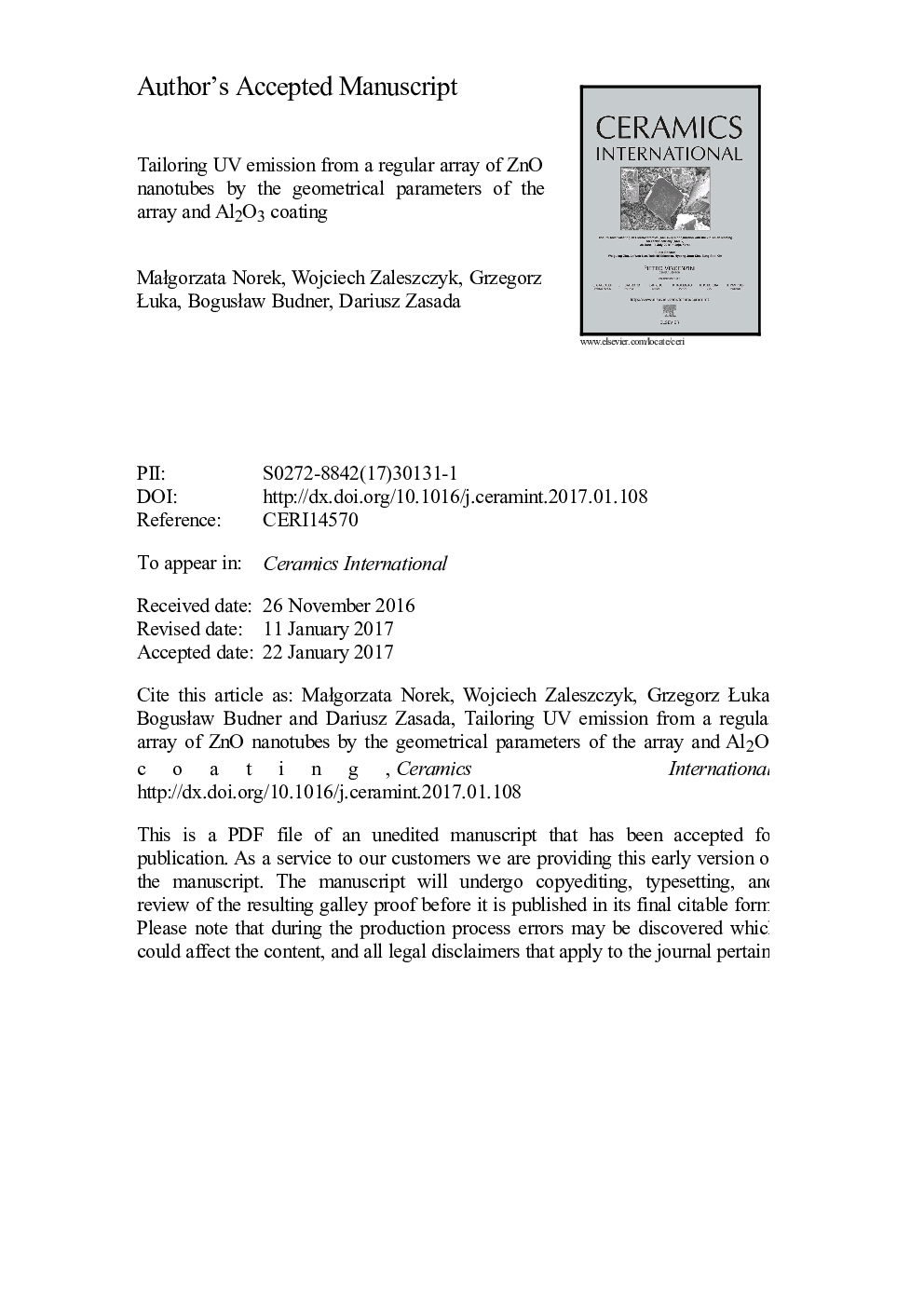| Article ID | Journal | Published Year | Pages | File Type |
|---|---|---|---|---|
| 5437581 | Ceramics International | 2017 | 30 Pages |
Abstract
Self-aligned and equal-spaced zinc oxide (ZnO) nanotube arrays were fabricated with anodic aluminum oxide (AAO)-assisted growth and the ALD technique. The near band-edge (NBE) emission was strongly affected by the nanotube's geometrical parameters, such as a packing density and thickness of the nanotube walls. The NBE emission was further enhanced with Al2O3 coating. The effect was analyzed by X-ray photoelectron spectroscopy (XPS) and ascribed to the surface defect passivation and a ZnAl2O4 spinel formation. The NBE emission enhancement was greater in ZnO nanotubes with thicker walls. A smaller UV enhancement factor was explained by less uniform and integral Al2O3 coverage of the ZnO nanotubes with thinner walls; this, possibly induced a variation of the Al2O3 refractive index along the nanotubes. As a result, the optical conditions at the ZnO/Al2O3/air interfaces was changed and the light extraction efficiency was reduced in the latter samples.
Keywords
Related Topics
Physical Sciences and Engineering
Materials Science
Ceramics and Composites
Authors
MaÅgorzata Norek, Wojciech Zaleszczyk, Grzegorz Åuka, BogusÅaw Budner, Dariusz Zasada,
